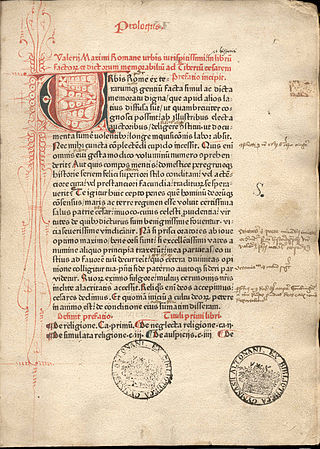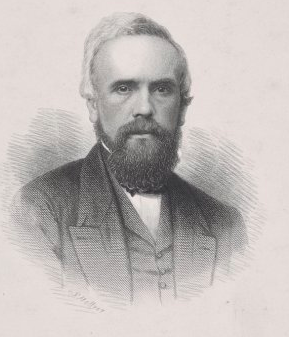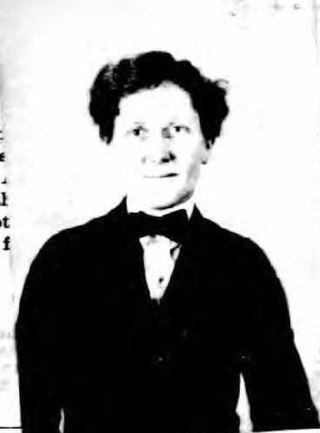
An incunable or incunabulum is a book, pamphlet, or broadside that was printed in the earliest stages of printing in Europe, up to the year 1500. Incunabula were produced before the printing press became widespread on the continent and are distinct from manuscripts, which are documents written by hand. Some authorities on the history of printing include block books from the same time period as incunabula, whereas others limit the term to works printed using movable type.

Bibliography, as a discipline, is traditionally the academic study of books as physical, cultural objects; in this sense, it is also known as bibliology. English author and bibliographer John Carter describes bibliography as a word having two senses: one, a list of books for further study or of works consulted by an author ; the other one, applicable for collectors, is "the study of books as physical objects" and "the systematic description of books as objects".

The Radcliffe Institute for Advanced Study at Harvard University, also known as the Harvard Radcliffe Institute, is an institute of Harvard University that fosters interdisciplinary research across the humanities, sciences, social sciences, arts, and professions. It came into being in 1999 as the successor institution to the former Radcliffe College, originally a women's college connected with Harvard.

Octavo, a Latin word meaning "in eighth" or "for the eighth time", is a technical term describing the format of a book, which refers to the size of leaves produced from folding a full sheet of paper on which multiple pages of text were printed to form the individual sections of a book. An octavo is a book or pamphlet made up of one or more full sheets on which 16 pages of text were printed, which were then folded three times to produce eight leaves. Each leaf of an octavo book thus represents one eighth the size of the original sheet. Other common book formats are folios and quartos. Octavo is also used as a general description of the size of books that are about 8 to 10 inches tall, and as such does not necessarily indicate the actual printing format of the books, which may even be unknown as is the case for many modern books. These terms are discussed in greater detail in book sizes.

Albrecht Pfister was one of the first European printers to use movable type, following its invention by Johannes Gutenberg. Working in Bamberg, Germany, he is believed to have been responsible for two innovations in the use of the new technology: printing books in the German language, and adding woodcuts to printed books. The typefaces of Pfister, although similar to Gutenberg's, have their own peculiarities.

Quarto is the format of a book or pamphlet produced from full sheets printed with eight pages of text, four to a side, then folded twice to produce four leaves. The leaves are then trimmed along the folds to produce eight book pages. Each printed page presents as one-fourth size of the full sheet.

Charles Evans was an American librarian and bibliographer.
Allan Henry Stevenson was an American bibliographer specializing in the study of handmade paper and watermarks who "single-handedly created a new field: the bibliographical analysis of paper." Through his pioneering studies of watermarks, Stevenson solved "the most fascinating, and perhaps the most notorious, bibliographical problem of our time," the dating of the Missale Speciale or Constance Missal, an undated incunable believed by many to pre-date the Gutenberg Bible, and possibly to have been the first printed European book. Stevenson proved that the book in fact had been printed nearly twenty years later, in 1473. Through similar analysis of watermarks, he also established that most block books, small religious books in which the text and images were printed from a single woodcut block and which many believed dated from the early 15th century, had in fact been printed after 1460.

Joseph Sabin was a Braunston, England-born bibliographer and bookseller in Oxford, Philadelphia, and New York City. He compiled the "stupendous" multivolume Bibliotheca Americana: A Dictionary of Books Relating to America, considered a "bibliophilic monument;" and published the American Bibliopolist, a trade magazine. His sons Robert T. Sabin and William W. Sabin also worked in the bookselling business.
Henrietta Collins Bartlett was an American bibliographer, Shakespeare scholar, and creator of the first modern census of Shakespeare's published drama. She has been called "one of the foremost bibliographers of her time," despite working in a scholarly field in which "the overwhelming majority has been male."

John Thomson (1835–1916) was the first head librarian of the Free Library of Philadelphia.

J. R. R. Tolkien: A Descriptive Biography is a work by Douglas A. Anderson and Wayne G. Hammond that is a complete bibliography of the publications of J. R. R. Tolkien. It has a foreword by Rayner Unwin.
Margaret Bingham Stillwell was an American librarian and bibliographer who spent most of her professional career as curator of the Annmary Brown Memorial.

Carolyn Farquhar Ulrich was an American librarian. She created the Ulrich's Periodicals Directory in 1932.
Ruth Mortimer was an American rare books curator and librarian, known for her work at both Harvard University and Smith College. From 1988 to 1992, Mortimer served as the president of the Bibliographical Society of America, the first woman to inhabit the role.
Geneva Sayre was an American bryologist and bibliographer. She "pioneered bibliographical and historical bryology, a new field in the study, evaluation, and organization of the literature of bryology."

Jacob Nathaniel Blanck was an American bibliographer, editor, and children's writer. Born in Boston, he attended local schools and briefly ran a bookshop before being hired to assist on a bibliography of American first editions. He wrote for periodicals on the book trade and worked as a bibliographer in libraries including the Library of Congress in the 1940s and 1950s. Blanck also published two children's books. In the early 1940s, he founded a bibliography project that became Bibliography of American Literature, a selective bibliography of American literature. It was completed by 1992, after Blanck's death.
Paul Needham is an American academic librarian. From 1998 to 2020, he worked at the Scheide Library at Princeton University. A Guggenheim Fellow and Bibliographical Society Gold Medallist, Needham has delivered the Sandars Readership in Bibliography at the University of Cambridge, the A. S. W. Rosenbach Lectures in Bibliography at the University of Pennsylvania, and the Lyell Lectures at the University of Oxford. His focus is on incunabula, the earliest printed books in Europe.
Richard Beale Davis was an American academic who specialised in the history of the Southern United States, with a focus on its literature and intellectual history. His works included the 1978 book Intellectual Life in the Colonial South, which was awarded the National Book Award for history, as well as several other accolades. He taught at the University of Virginia, University of South Carolina, and University of Tennessee, among other places.











